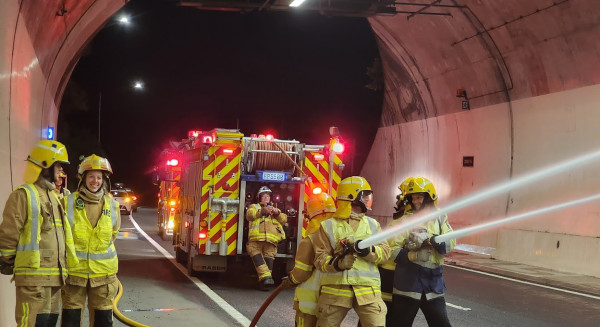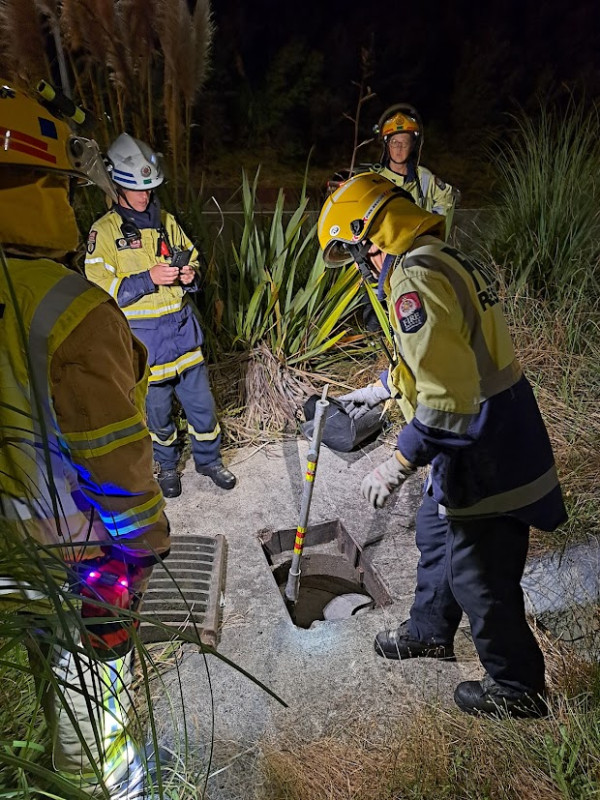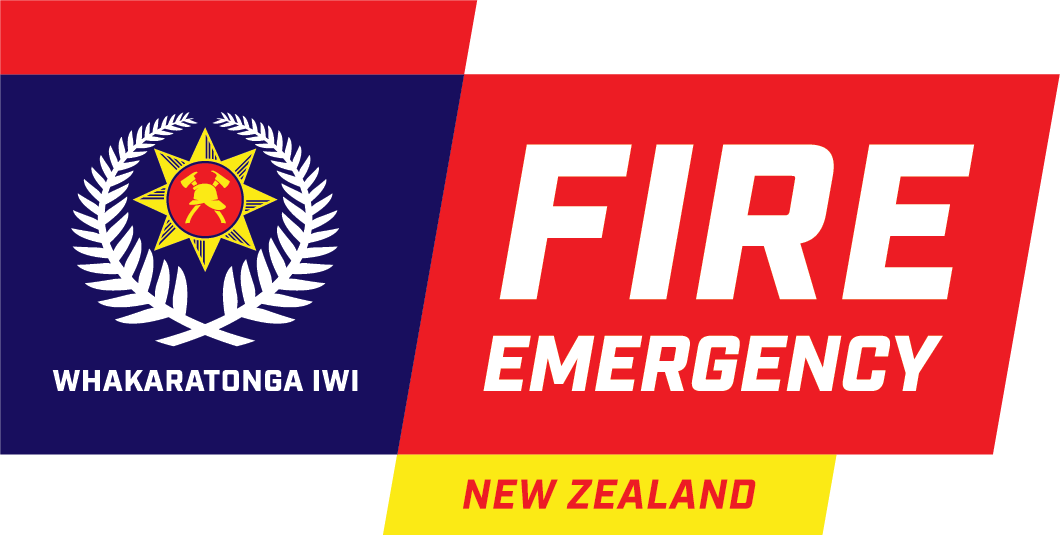Crews train at Johnstone’s Hill Tunnel
Our Puhoi and Silverdale crews worked alongside personnel from Waka Kotahi recently on drills and testing in Johnstone’s Hill tunnel just south of Puhoi.
Group Manager Shaun Thornton, National Infrastructure Advisor Jon Harris, Rural Controller Russell Green with the Puhoi Crew, and Chief Fire Officer Don McErlich with the Silverdale Crew conducted fire drills in the 345-metre-long tunnel which has 14 fire hydrants and a 30-zone deluge sprinkler system. Both systems are supplied by an 800,000-litre water tank located above the tunnels.
The Johnstone’s Hill Tunnel is a 345-metre long dual tunnel located just south of Puhoi. There are two cross passageways between the tunnels that provide safe egress and assembly areas for occupants. These passageways are pressurised with fresh air from the non-incident tunnel to allow smoke-free pedestrian movement. During an incident, they can also be used by emergency personnel to access the incident tunnel.
Jon said the tunnels have 14 fire hydrants and a 30-zone deluge sprinkler system. Both of these systems are supplied by an 800,000-litre water tank located above the tunnels. With two deluge zones operating, the static water supply has a duration of approximately 90 minutes.
‘The drill started by connecting hose lines to the fire hydrants to make sure there was enough pressure to supply adequate fire streams. Then, the deluge system was activated to determine the effect on the operating streams. It was determined that even when the deluge system was running, there was enough pressure to simultaneously operate two fire streams. We noticed reduced pressure, but crews were still able to have adequate streams for firefighting.
‘Next, we conducted some tests on communication. Cell phones do not work well in the tunnel, but the IGC radios seemed to work adequately on UHF A1. Quite a bit of static was heard over the radio when at opposite ends of the two tunnels, but we still could communicate. We found though that audibility issues from high ambient noise from the deluge, ventilation, and evacuation messages all combined to hinder communication in the tunnel. Even person to person communication could become difficult.’
Jon said lastly, crews became familiar with the two holding tanks. These 10,000 litre tanks, one located on each side of the tunnel, can trap hazardous substances draining from a vehicle in the tunnel. Water normally flows through the tanks to a pond so, upon their arrival, crews must shut the isolation valves to contain the contaminated liquids.
‘The drill was a worthwhile venture and success. We appreciate the working relationship we have with Waka Kotahi and look forward to continuing to train in these technical environments.’



